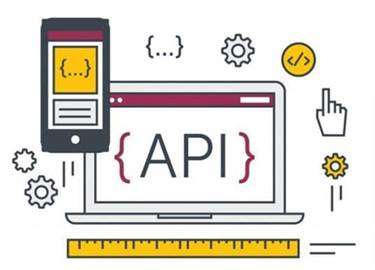Onion Architecture And Clean Architecture
The onion model is a popular way of representing hierarchy within organizations. The model is based on the metaphor of an onion, with each layer representing a different level of the hierarchy. The outermost layer represents the highest level, while the innermost layer represents the lowest level. This model can be used to visualize relationships between different levels of a hierarchy, and to understand how these relationships can be used to influence organizational decision-making. Clean Architecture places a particular emphasis on the use of dependency inversion to decouple components from technical concerns.
- There should be a separation of concerns because none of the layers in 3-tier and n-tier structures are independent.
- The Onion Architecture’s testability is one of its main advantages.
- In other words, this is where we hook up the Data access logic or logging logic or service calls logic.
- The sequential model is best suited for developing flows for a process.
- We can design more microservices with the same databases, but everyone microservices must own its domain data and the logic.
- This class is coupled to a particular method of data access, and that is why it resides outside the application core.
Now, you can swap out LINQ to SQL with NHibernate (or any ORM) without breaking existing parts of the application. This approach is used to decouple things like configuration and logging so they convert into replaceable mechanisms. Onion Architecture explicitly separates technical concerns from business logic by placing them in the outer layers of the application. When designing the architecture of a building there are many aspects you need to consider.
Disadvantages of onion architecture
At the center part of the Onion Architecture, the domain layer exists; this layer represents the business and behavior objects. The idea is to have all of your domain objects at this core. Besides the domain objects, you also could have domain interfaces. Domain objects are also flat as they should be, without any heavy code or dependencies.

Domain-Driven Design centres on the domain model that has a rich understanding of the processes and rules of a domain. Onion architecture implements this concept and dramatically increases code quality, reduces complexity and enables evolutionary enterprise systems. When I observe these patterns, I feel all three patterns are trying to advocate similar ideas.
Understanding Onion Architecture: An Example Folder Structure
Onion Architecture requires a good understanding of software architecture principles and design patterns. Developers who are not familiar with these concepts may find it challenging to implement and maintain an Onion Architecture-based application. Using this approach, we can encapsulate all of the rich business logic in the Domain and Service layers without ever having to know any implementation details. In the Service layer, we are going to depend only on the interfaces that are defined by the layer below, which is the Domain layer.
Different layers of onion architecture have a different set of responsibilities and accordingly, there are different testing strategies. The testing pyramid is a great framework that lays out the different types of tests. Business rules that belong to the domain model, domain services and application services should be tested via Unit Testing. As we move to the outer layer, it makes more sense to have integration tests in infrastructure services.
Demystifying software architecture patterns
This is another variant that I have noticed in many huge solutions. Let’s say you have around 100 interfaces and 100 implementations. Do you add all these 100 lines of code to the Startup.cs to register them in the container? That would be insane from the maintainability point of view. To keep things clean, what we can do is, Create a DependencyInjection static Class for every layer of the solution and only add the corresponding.

The Model is used to move data between the View and the Controller, where the business logic executes any operations. The Controller handles web requests via action methods and returns the appropriate View. As a result, it solves the problem https://www.globalcloudteam.com/ of separation of concerns while still allowing the Controller to perform database access logic. These issues were addressed by Onion Architecture, which defined layers from the core to the infrastructure (Separation of Concerns).
Getting Started with Onion Architecture
To keep it clear, in the above diagram we can see that the presentation layer depends on the logics layer, which in turn depends on the data access and so on. The most interesting thing to notice that there are no special references in this project, and the domain objects are flat objects as they should be, without any heavy code or dependencies. The biggest offender is the coupling of UI and business logic to data access. However, the flexibility with technology upgrades doesn’t come handy with tightly coupled systems. In other words, if your application has several lines of code in button_submit or page_load events and if it’s doing several things in one single method, then it’s a matter of concern. Because sooner or later system will change and new developers will keep adding new business logic to these existing events, and the eventual situation would be very chaotic.
Based on the DDD model, we’ve created onion architecture (aka hexagonal or clean architecture). There are several ways to design a system in software engineering, and every design has its own merits and challenges. So metimes different design approaches try to achieve similar objectives.
Taking Care of Database Migrations
The outer rings are mechanisms (including different switchable modules), whereas the inside circles are fundamental domain logic. The outer layers rely on the inner layers, and the inner layers are unaffected by any changes being introduced in the outer rings. The domain entities are the heart and soul of the system. The onion architecture is based on a domain model with layers connected by interfaces.
The Application layer defines the use cases of the application and implements the business logic using the services and interfaces provided by the Domain layer. If you have very complex business logic, it would make sense to encapsulate it inside of our domain entities. But for most applications, it is usually easier to start with a simpler domain model, and only introduce complexity if it is required by the project. Notice, that the biggest file is the one for the infrastructure layer. The
infrastructure has all the framework — in this case Spring Boot — database driver, and other dependencies, and itself
depends on both domain and application. There’s of course nothing preventing you from declaring extra dependencies,
say Lombok.
Observability services
I am going to talk about issues faced with traditional designs and then we will see how Onion Architecture addresses these common issues. The Onion Architecture is a software architecture that was first introduced by Jeffrey onion architecture Palermo around 2008. It is focused on modeling business logic and entities at the application’s core, without any notion of the outside world. This makes it ideal for applications that need to be scalable and maintainable.
 FLI
FLI
